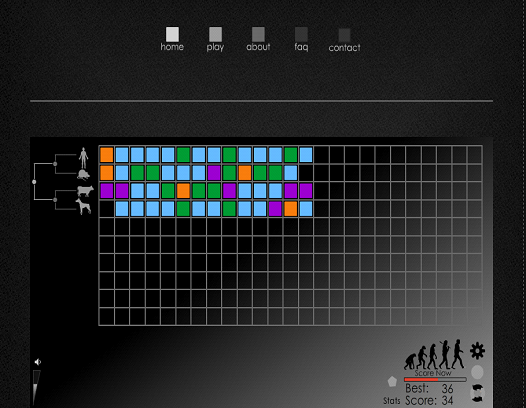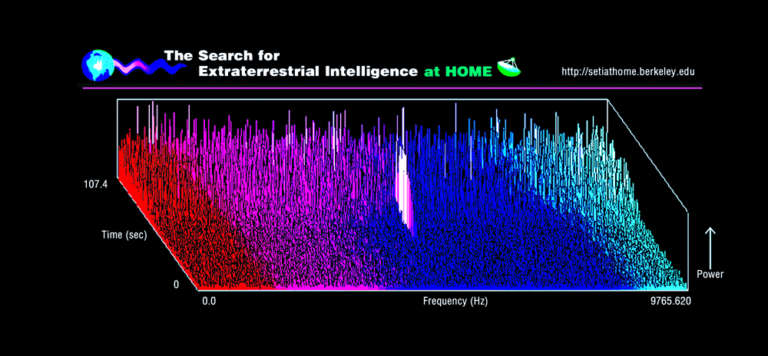Mike Malaska • May 12, 2011
Citizen Science projects for Planetary Science: Get Involved! Do Science!
I've been meaning to write up a blog entry on this topic for a while so was very happy to have someone do it for me -- Mike Malaska. By day, Mike is a Ph.D. organic chemist leading drug discovery projects for a pharmaceutical company. By night, he is a space enthusiast fascinated by the surface geology of Titan and other planetary bodies, and an eager citizen scientist. He prepared the following list to support the upcoming Citizen Science exhibit at the Astronomy Days event at the North Carolina Museum of Natural Sciences on May 21-22 -- a free event, by the way, for those of you in the area of North Carolina! --ESL
Citizen Science projects let volunteers easily contribute to active science programs. They're useful when there is so much data it overwhelms computing algorithms (if they exist) or the scientific research team attempting to process it. In many cases it is easier to train volunteers to recognize patterns than it is to create a computer algorithm that attempts to do the same thing. (In some cases, the two approaches can be combined: Citizen Science data and results can be used as training sets to create advanced computer algorithms.)
There are many opportunities for citizen scientists to assist in the analysis of the huge amounts of data collected from spacecraft missions or other records that are then distributed out to volunteer researchers of various levels and interests. Many are 100% online so can be done from the relative safety (and warmth) of your home computer. Many allow you to jump in right away (a minimal tutorial is usually helpful at the beginning) for a quick try, while more in-depth exploration is possible through associated forums or blogs. Here is a quick list and links to some planetary science and astronomy Citizen Science projects (in rough order of increasing commitment):
What you do: Nothing! Download the SETI@Home screensaver and let your computer search for extraterrestrial signals automatically during computer idle time.
Equipment needed: Computer and internet connection. (100% online)
International Observe the Moon night
What you do: On October 8, 2011, go outside and look at the moon!
Equipment needed: None.
What you do: Go outside and compare key constellations to a provided guide to determine level of local light pollution.
Equipment needed: Can be done on computer or even iPhone with downloadable app.
What you do: Count stars in certain constellations sometime during a 4-day period to determine light pollution (next count: October 14-28, 2011).
Equipment needed: None!

What you do: Identify craters larger than a certain size with a drawing tool (Crater survey); compare two images to see which has more boulders (Boulder Wars).
Equipment needed: Computer and internet connection. (100% online)
What you do: Look at Kepler light curve data to identify extrasolar planets.
Equipment needed: Computer and internet connection. (100% online)
What you do: Identify and track solar storms.
Equipment needed: Computer and internet connection. (100% online)
What you do: Identify and outline giant bubbles in images of the Milky Way as taken by the Spitzer IR telescope.
Equipment needed: Computer and internet connection. (100% online)
What you do: Look at pictures of galaxies from the Sloan Digital Sky survey and click on "classifications."
Equipment needed: Computer and internet connection. (100% online)
What you do: Search images for tracks left by interplanetary dust grains captured by the Stardust spacecraft's aerogel matrix.
Equipment needed: Computer and internet connection. (100% online)

What you do: Observe the variable (visible to the naked eye) star epsilon Aurigae and note its brightness compared to other stars.
Equipment needed: View of Northern hemisphere winter sky (constellation Auriga is high overhead).
Association of Lunar and Planetary observers (ALPO)
What you do: Record and identify changes and features in many solar system bodies (impacts on the Moon, comets, Jupiter, Saturn, etc.).
Equipment needed: Various, but observation time is needed.
American Association of Variable Star Observers
What you do: Observe and create light curves of variable stars.
Equipment needed: Telescope and/or naked eye observations of key stars; computer and internet connection.
What you do: Image objects related to NASA Gamma-ray space telescope, Swift, and XMM-Newton mission.
Equipment needed: Astronomical imaging gear.
Planetary Visual Observatory and Laboratory (PVOL)
What you do: Take and upload astrophotographs to a database of outer planet images. (Jupiter, Saturn, Uranus, Neptune.)
Equipment needed: High-quality telescope and imaging setup.
BAA-Jupiter sectionWhat you do: Image Jupiter and record changes in its cloud belts.
Equipment needed: CCD or Webcam and minimum 4-inch refractor or 6-inch reflector are recommended.
What you do: Build a working radio astronomy receiver and record Jupiter and solar emissions.
Equipment needed: How-to instructions to build and wire your own radio receiver are included.
For the really interested astronomy enthusiasts, you can come up with your own projects based on your own observations. Here is a starter guide that suggests several types of projects.
Citizen Science projects are not just limited to astronomy! A great general resource to find Citizen Science projects is scienceforcitizens.net. Here are just a few examples in different disciplines:
MOLECULAR BIOLOGY:
What you do: Align genetic sequences using an easy and highly addictive game format online.
Equipment needed: Computer and internet connection. (100% online)

NATURAL SCIENCES / ECOLOGY:
What you do: Observe birds and note behavior using webcam images transmitted to your computer.
Equipment needed: Computer and internet connection. (100% online).
WEATHER:
Student's Cloud Observations Online (S'COOL)
What you do: Observe clouds at specified times and report (can be done anywhere).
Equipment needed: Access to outside (can be done anywhere); computer and internet connection.
NATURAL SCIENCES / ECOLOGY:
What you do: Observe and count birds on a 4-day period (next count is Feb 18-21, 2012).
Equipment needed: Access to outside (doesn't require internet connection).
NATURAL SCIENCES / ECOLOGY:
What you do: Observe and note birds in your backyard or other locations.
Equipment needed: Access to outside; computer and internet connection.

WEATHER:
What you do: Transcribe weather data from old shipping logs (you get to choose the vessel!)
Equipment needed: Computer and internet connection. (100% online)
NATURAL SCIENCES / ECOLOGY:
What you do: Observe when certain key plants bud or flower.
Equipment needed: Access to outside.
NATURAL SCIENCES / ECOLOGY:
What you do: Record and identify and take pictures of swarms of dragonflies.
Equipment needed: Access to outside; digital camera; computer and internet connection.
FOSSILS:
What you do: Volunteers dig through a baggie of fossil matrix to identify rocks, shells, and plant pieces that were excavated near a mastodon fossil.
Equipment needed: Minimal; surrounding matrix will be provided to you.
All these projects allow you to quickly dive in and start working in a scientific project. Now you have multiple opportunities to collaborate and discover something new! Good luck!
Support our core enterprises
Your support powers our mission to explore worlds, find life, and defend Earth. You make all the difference when you make a gift. Give today!
Donate

 Explore Worlds
Explore Worlds Find Life
Find Life Defend Earth
Defend Earth


